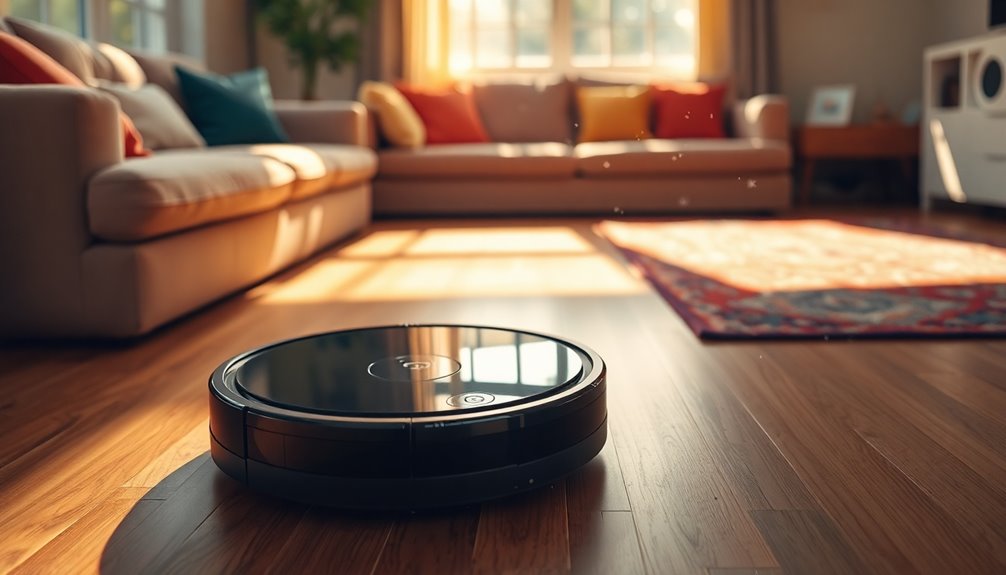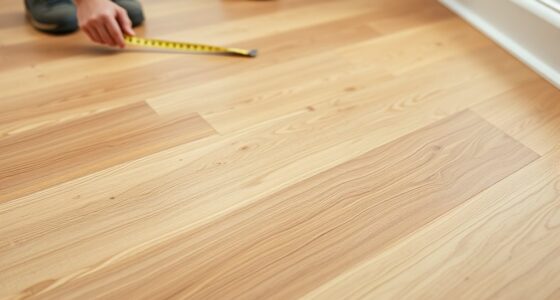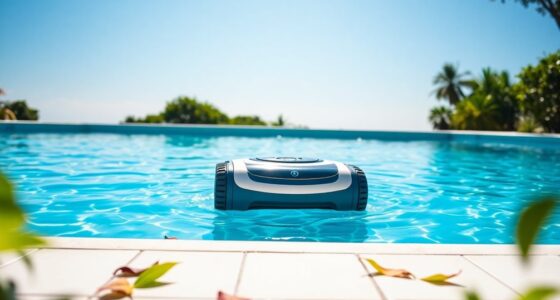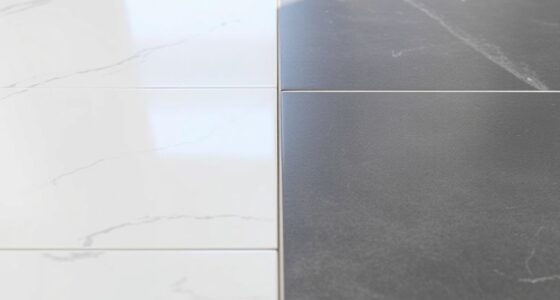Robotic vacuum cleaners are smart, autonomous devices that make cleaning your home easier. They use advanced sensors to avoid obstacles and adapt to different floor types, so you can relax while they do the work. With features like mapping technology and smart home integration, you can control and schedule cleanings with ease. Plus, they automatically recharge when needed. There's a lot more to discover about how these gadgets can enhance your home maintenance routine.
Key Takeaways
- Robotic vacuum cleaners are autonomous devices designed for hassle-free home cleaning with minimal human intervention.
- They use advanced sensors to navigate around obstacles and adapt to various floor types for efficient cleaning.
- Most models provide up to 120 minutes of run time and automatically return to their dock for recharging.
- Higher-end models feature mapping technology to create digital layouts for systematic cleaning and scheduling via smartphone.
- These devices can integrate with smart home systems, allowing users to control cleaning through voice commands or mobile apps.

Robotic vacuum cleaners are revolutionizing how we maintain our homes, offering a hassle-free way to keep floors spotless. These autonomous devices are designed to handle cleaning with minimal human intervention, allowing you to focus on other aspects of your day. Since the debut of the Electrolux Trilobite in 1996 and the popularization of the iRobot Roomba in 2002, robotic vacuums have come a long way. With over 50 models available today, there's a robotic vacuum cleaner suited to your needs.
Modern robotic vacuum cleaners are equipped with advanced sensors to avoid obstacles, ensuring they navigate your home efficiently. These obstacle sensors allow the vacuum to detect furniture, pets, and other barriers, preventing collisions and potential damage. As they glide across different floor types, from hardwood to carpet, they adapt their cleaning methods accordingly, making them versatile companions for any household.
Battery life is another critical feature of robotic vacuums. Most models utilize lithium-ion batteries, providing up to 120 minutes of run time. This duration is often sufficient to cover most homes, but if the battery runs low, the vacuum knows to return to the dock for recharging. Once it's powered up, it can resume cleaning right where it left off, ensuring you never have to worry about incomplete tasks.
Higher-end models incorporate mapping technology, such as built-in cameras, allowing them to create digital maps of your living space. This means they can develop systematic cleaning paths, ensuring efficient cleaning without missing any spots. By utilizing this technology, you can set cleaning schedules through your smartphone, so your home stays clean even when you're not around.
Integrating with smart home systems like Amazon Alexa and Google Assistant, these robotic vacuum cleaners offer an extra layer of convenience. You can control your vacuum remotely, giving you the ability to start cleaning or adjust schedules with just your voice or a few taps on your phone. The result is a perfect blend of technology and practicality that makes maintaining cleanliness in your home easier than ever.
Frequently Asked Questions
What Is the Disadvantage of a Robot Vacuum?
When considering a robot vacuum, you might notice a few disadvantages.
They often struggle with deep cleaning, especially on high-pile carpets, due to weaker suction. You'll need to regularly maintain them by emptying dustbins and cleaning brushes, which can be tedious.
Navigating complex floor plans can lead to missed spots, and with limited battery life, they mightn't cover larger spaces in one go.
Plus, the initial cost can be higher than traditional vacuums.
Can a Robot Vacuum Replace a Normal Vacuum?
A robot vacuum can't fully replace a normal vacuum.
While it excels at maintaining cleanliness on hard floors and low-pile carpets, it typically struggles with deep cleaning high-pile carpets.
You'll find its dust container fills up quickly, requiring frequent emptying.
Plus, for homes with pets, it may not manage hair removal as effectively as a traditional vacuum.
Where Does the Dirt Go in a Robot Vacuum Cleaner?
In a robot vacuum, the dirt you collect goes into a removable dust container located inside the unit.
Depending on the model, this container can vary in size, with premium options offering larger capacities.
Many of these vacuums also feature a HEPA filter, which traps allergens and fine particles.
To keep your robot working effectively, you'll need to regularly empty and clean the dust container to maintain optimal suction and cleaning efficiency.
Are Robot Vacuums Better Than Regular Vacuums?
When deciding if robot vacuums are better than regular ones, consider your cleaning needs.
Robot vacuums handle daily maintenance effortlessly, letting you save time and energy. They're great for light cleaning and can navigate your home autonomously.
However, if you need deep cleaning for carpets or stubborn dirt, traditional vacuums often have stronger suction.
Ultimately, it depends on whether you prioritize convenience or power in your cleaning routine.
Conclusion
In conclusion, robotic vacuum cleaners are a game-changer for busy lives. They save you time and effort by effortlessly navigating your home while picking up dirt and debris. With smart technology and programmable features, they adapt to your cleaning needs, making home maintenance a breeze. So why not embrace this innovative solution? You'll enjoy a cleaner space without the hassle, allowing you to focus on what truly matters in your day-to-day life.









